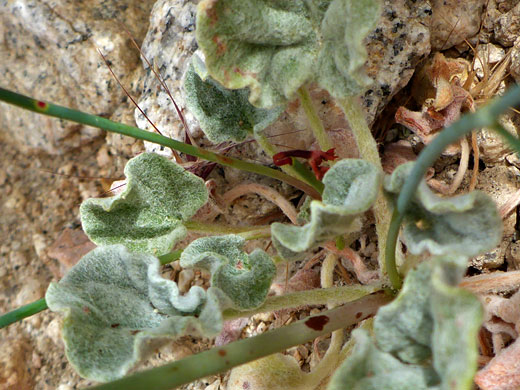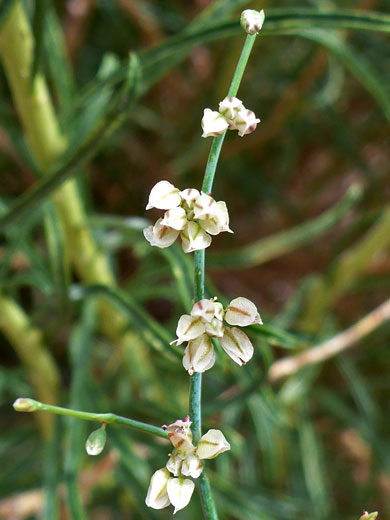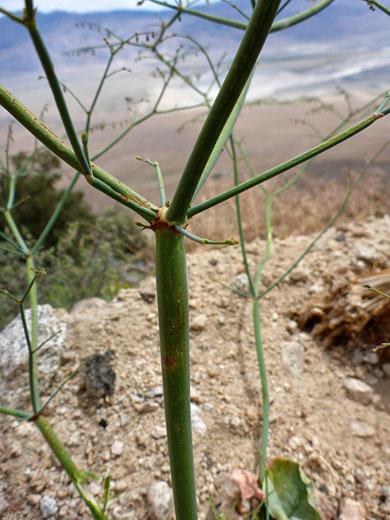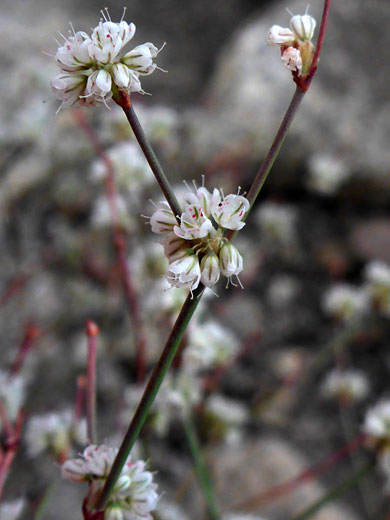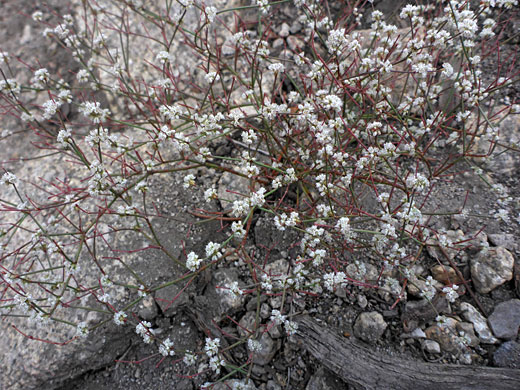
Eriogonum baileyi var baileyi (bailey's wild buckwheat), Horseshoe Meadows Road, Sierra Nevada, California
Common name:
Bailey's wild buckwheat
Family:
Scientific name:
Eriogonum baileyi
Main flower color:
Range:
The Pacific states and the Great Basin
Height:
Up to 15 inches
Habitat:
Woodland, sagebrush, open places on slopes and flats, often gravelly or sandy locations, from 3,000 to 8,000 feet
Leaves:
Basal, stalked, tomentose; blades are round, up to 0.8 inches across
Season:
June to October
Eriogonum baileyi is most widespread across the Sierra Nevada and the ranges of southern California; it is also found across the mountains of Nevada, and scattered locations further north.
Leaves grow only at the base and are attached by relatively long stalks, about twice the width of the blade. Leaves have a covering of greyish, tomentose hairs, denser for the undersurfaces. Stems are usually glabrous but may also be tomentose.
The inflorescence is an open cluster, the branches of which bear single, stalkless flowers at regular, well-spaced intervals, usually all pointing in the same direction. Each flower is subtended by three tiny bracts. Involucres are narrow at the base, wider above, and are lined by five triangular teeth. Tepals are white to pale pink, crossed by a greenish-brown stripe. Stamens are not exserted.
Two varieties are var baileyi, for which the inflorescence is glabrous, and the less widespread var praebens, for which the inflorescence is tomentose.
Leaves grow only at the base and are attached by relatively long stalks, about twice the width of the blade. Leaves have a covering of greyish, tomentose hairs, denser for the undersurfaces. Stems are usually glabrous but may also be tomentose.
The inflorescence is an open cluster, the branches of which bear single, stalkless flowers at regular, well-spaced intervals, usually all pointing in the same direction. Each flower is subtended by three tiny bracts. Involucres are narrow at the base, wider above, and are lined by five triangular teeth. Tepals are white to pale pink, crossed by a greenish-brown stripe. Stamens are not exserted.
Two varieties are var baileyi, for which the inflorescence is glabrous, and the less widespread var praebens, for which the inflorescence is tomentose.
All Contents © Copyright The American Southwest | Comments and Questions | Contribute | Site Map

